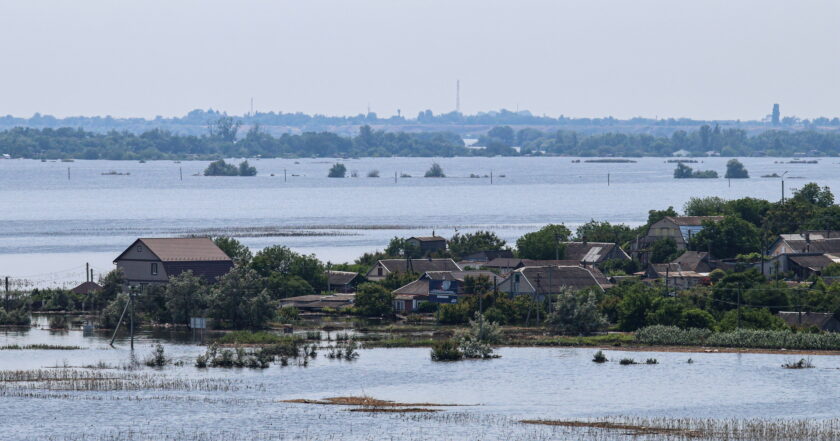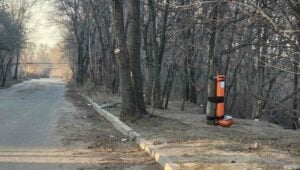Russia's destruction of Kakhovka Dam has caused at least $2 bln in direct damage to Ukraine

Photo: Rubryka
The direct damage caused by Russia's destruction of the Kakhovka Hydroelectric Power Plant is already at least $2 billion. The tragedy led to significant damage to the housing and utility sectors and the energy industry, as well as substantial indirect damage to agriculture due to the region's irrigation loss.
The KSE Institute team (an analytical unit of the Kyiv School of Economics) did an initial analysis as part of the Russia Will Pay project in cooperation with the Office of the President of Ukraine, the Ministry of Economy of Ukraine, and the Ministry of Community Development, Territories and Infrastructure of Ukraine.
Housing. The housing stock of settlements in the flooded Kherson and Mykolaiv regions suffered losses: 49 and 31 cities, villages, and towns, respectively. More than 500 private houses in the countryside were flooded in the Mykolaiv region. The exact number of damaged or destroyed residential buildings in the Kherson region cannot be determined because Russia occupies part of the region. Preliminary estimates say that about 20,000-30,000 buildings* were in the flooding zone, of which at least 150 are multi-story buildings in Kherson.
Direct damage from the flooding of private houses and related infrastructure is estimated at $950 million, the bulk of which falls on the left bank of the Dnipro River, which is currently under temporary occupation. This first rapid estimate of potentially flooded residential buildings is calculated by pre-invasion population data.
At the same time, the number and area of flooded buildings are currently being assessed through the analysis of satellite images and modeling, which, according to estimates, has identified 32,000 buildings at risk.
Also, in 2023, Ukraine will incur additional costs for constructing water mains. A significant part of the Dnipropetrovsk, Zaporizhzhia, Mykolaiv, and Kherson regions may be left without water supply due to a drop in the water level in the Kakhovka Reservoir. To eliminate the consequences of destroying the hydroelectric power station, the budget committee agreed to allocate $41 million (UAH 1.5 billion) to construct main water pipelines.
Energy. More than a quarter of the total losses — $586 million — is directly related to the destruction of the Kakhovka hydroelectric plant, which has a capacity of 334.8 MW and is not subject to restoration, and the dam. The total losses of the power industry reached $624 million. The annual economic losses caused by the destruction of the hydroelectric power station to the state company Ukrhydroenergo amount to more than $100 million. The need to construct a new hydroelectric power station of similar capacity will amount to about $1 billion.
Also, power grids were lost in flooded settlements, and 17 gas stations and oil depots were flooded due to flooding.
Transport infrastructure. The damage caused to the transport infrastructure reached $311 million. According to project experts, more than 290 km of roads were affected by the flood. Some international and regional roads are flooded. Communal roads are the most destroyed, affecting more than 50% of the total length. Traffic on the main roads on the right bank of the Dnipro River was restored until June 19, 2023. Also, during the first days after the detonation of the dam, some bridges and smaller dams in the Mykolaiv and Kherson regions were temporarily flooded, which may also impact the loss of their value.
Industry. According to preliminary estimates, industrial enterprises and other businesses lost $105 million. Business losses from the flood were significantly reduced because some enterprises relocated earlier or stopped due to hostilities. It can be expected that heavy equipment that could not be transported and buildings were mainly affected. Among them are extensive industrial facilities located in the Korabelnyi district of Kherson. The local administration reported the flooding of 28 extensive industrial facilities located on the right and left banks of the Dnieper.
Agriculture. The destruction of crops, livestock, and fish resulted in agricultural losses of $25 million. Minor direct losses are because the territories have been under constant fire since the beginning of the full-scale invasion, and there is no active use of agricultural land and a relatively small area of agricultural land that was flooded.
The Kakhovka reservoir provided water for irrigation systems and livestock, with a total area of 584,000 hectares (the actual area of irrigated land before the war was 262,000 hectares). Indirect revenue losses for crop production will increase by $182 million annually. Other sector branches will lose up to $49 million per year.
Environment and ecology. The estimated amount of environmental damage is $1.5 billion (according to the Ministry of Environmental Protection and Natural Resources). One hundred fifty tons of oil leaked when the dam exploded. The salinity level of the Black Sea near Odesa is almost three times lower than usual.
Flooding threatens three nature reserve parks: Nyzhniodniprovskyi, Kamianska Sich, Biloberezhia Sviatoslav, and the Black Sea Biosphere Reserve, which UNESCO protects.
The Kinpurn Spit regional landscape park, with a total area of almost 18,000 hectares, was in the zone of influence; sections of the Black Sea Biosphere Reserve "Volyzhyn Forest," Dovhyi Island, Kruhlyi Island with an area of 2,700 hectares; regional landscape park "Vysunsko-Inhuletsky," with an area of 2.7 thousand hectares.
* The flooded residential buildings were estimated by calculating pre-invasion population data. At the same time, the number and area of flooded buildings are currently being evaluated by analyzing satellite images and modeling, which may reveal a more significant number of affected objects.


















































